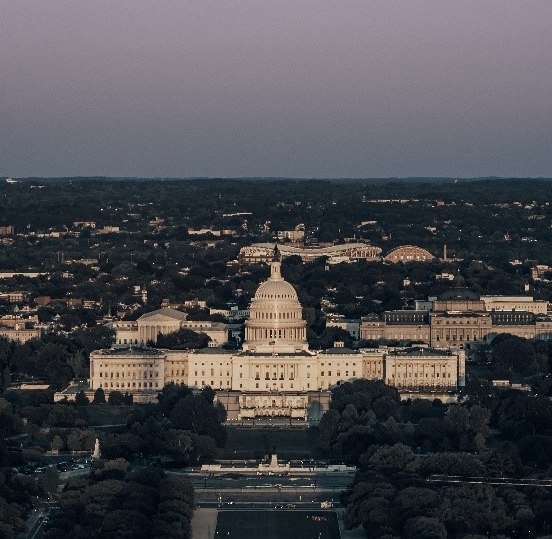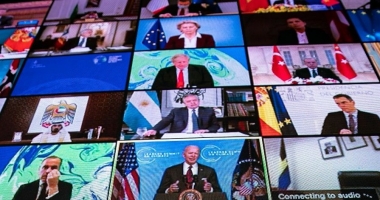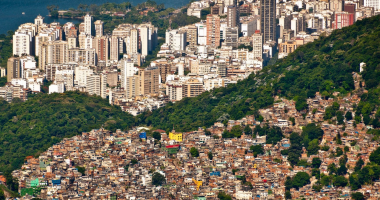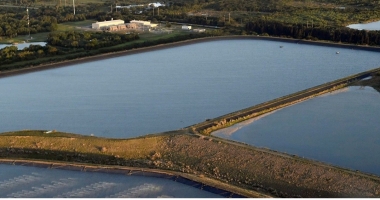Climate, Health and Equity Brief
Paul Billings on the State of the Air
May 28, 2020

As part of our weekly Climate, Health & Equity Brief, we’re pleased to share a periodic interview series with leaders working at the intersection of climate change, health and equity. This month we spoke with Paul Billings, National Senior Vice President of Public Policy for the American Lung Association.

The American Lung Association’s 2020 State of the Air report found an increase in the number of Americans breathing unhealthy air. How does climate change contribute to increasingly poor air quality?
The air Americans breathe is far cleaner than it used to be. This is largely thanks to the protections put in place under the Clean Air Act, the landmark law that celebrates its 50th anniversary this year. However, this year’s “State of the Air” report shows that climate change is undoing some of that progress, a disturbing trend we’ve seen over the past three years.
The “State of the Air” 2020 report analyzes the most recent three years of quality-assured data, covering 2016, 2017, and 2018. These years were the hottest, third-hottest and fourth-hottest on record, respectively, in keeping with predictions of the growing impact of climate change. This year’s report continues to demonstrate that climate change is degrading air quality in the United States and increasing the risk of air pollution harming health.
Far more people suffered unhealthy ozone pollution in this year’s State of the Air report than in the last three reports. This is in large part due to climate change driving warmer temperatures, which make ozone more likely to form and harder to clean up. We also saw an increase in short-term particle pollution in the report this year. More cities experienced more days of spikes in particle pollution, compared to the 2019 report, many reaching their highest number of such days ever reported, and wildfires played a huge role. Changing climate patterns are creating conditions that are more conducive to frequent and intense wildfires, and smoke from these wildfires contributes to spikes in particle pollution.
The report also revealed that people of color in the U.S. are disproportionately exposed to pollution. What steps can we take to reduce this disparity and protect these communities through environmental and economic policies?
COVID-19 shows all of us the importance of lung health. The preliminary data reminds us that some communities, including African Americans and Latinos, are experiencing significantly higher death rates than whites. Preliminary research also shows higher COVID-19 death rates for individuals exposed to elevated levels of particulate matter air pollution.
We need to make sure that the Clean Air Act is fully implemented and enforced. Over the past two years, we have seen EPA reduce enforcement and roll back clean air safeguards. We also know that some communities bear a disproportionate burden from the health harms of air pollution and the impacts of climate change. The law requires that national air pollution limits be set at levels that protect human health, according to the current science. However, the best science tells us that right now, the nation’s limits on ozone and particle pollution are too weak and that people of color are at increased risk of health harms from particle pollution. That’s why this year’s “State of the Air” report asks everyone to join our call for stronger limits. Every family has the right to breathe healthy air – and the right to know when air pollution levels are unhealthy.
Additionally, climate policy must ensure that all communities experience the benefits of pollution reduction – particularly the predominantly low-income communities of color that have a polluting source in their backyard or live near a major highway.
What is your greatest hope when it comes to our efforts to combat climate change?
I am so heartened by the fact that the new generation recognizes that climate change is an existential threat and is taking significant action to address it. In my lifetime, young people have led powerful movements – civil rights, anti-war, women’s rights, gay rights and more. I am optimistic that this new generation will use its power to demand the scale of action needed. The challenge is enormous, and the solutions will require creativity, innovation and sacrifice. The biggest obstacle is lack of political will, but people are coming together to insist on positive action, and that gives me hope.
Your biggest fear?
My greatest fear is that core Clean Air Act authorities will be revoked in exchange for policies that purport to address climate change. Big polluters, including large oil companies, are pursuing the repeal of EPA’s authority and obligation to address climate change and immunity of their civil liability in climate litigation in exchange for a carbon tax. Too many advocacy organizations and academic economists are promoting a new carbon tax approach paired with blocking the Clean Air Act. This is a terrible concept that takes away proven tools to address the pollution that causes climate change. Market-based solutions may be an effective complement to source-specific, enforceable pollution reduction obligations but they are not a replacement. Further, market-based solutions may leave specific communities at high risk to the health impacts of pollution and climate change, which is not acceptable.
What would you encourage others to do to make an impact in the fight against climate change?
As this year’s “State of the Air” shows, climate change is a public health emergency. However, addressing it is also a public health opportunity. Too many communities are still burdened by unhealthy air from power plants, factories, refineries, cars and trucks and other sources of pollution. By switching to clean, non-combustion, renewable energy and electric transportation, the nation can reduce greenhouse gas emissions and, at the same time, cut down on other types of pollution that cause immediate harm. We need everyone to call on their local, state and federal leaders to prioritize protecting health from climate change.
In addition, we at the American Lung Association are very concerned about backroom deals that could put clean air and public health at risk. Unfortunately, polluting industries are driving efforts to use climate change legislation to weaken the Clean Air Act. We call on the public to support the landmark Clean Air Act. And we urge everyone to join us in calling on your members of Congress to reject any policies that would block, weaken or delay critical Clean Air Act protections. EPA and states need more tools, not fewer. The challenge of dirty air and climate change cannot be addressed with one hand tied behind our back.






